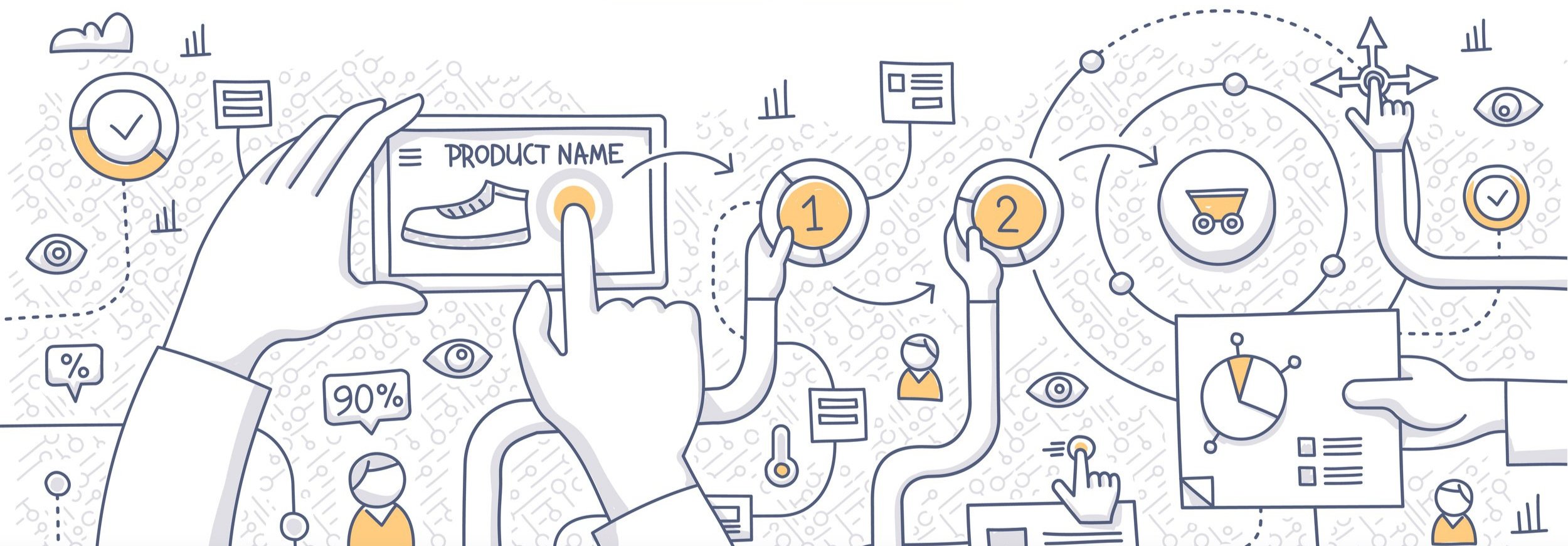Alistair Rennie and Jonny Protheroe from Google's consumer insights team conducted literary reviews, shopping observation studies, search trend analyses, and a large-scale experiment to understand how consumers make decisions in an online environment of abundant choice and limitless information.
Two Mental Modes: Exploration and Evaluation
Through the research, an updated decision-making model began to take shape. In the center of the model lies a complex space between triggers and purchase, where customers are won and lost. People look for information about a category's products and brands and then weigh all the options. This equates to two different mental modes: exploration, an expansive activity, and evaluation, a reductive activity. Whatever a person is doing, across an array of online sources, such as search engines, social media, aggregators, and review websites, can be classified into one of these two mental modes. People loop through these twin modes of exploration and evaluation, repeating the cycle as often as they need to make a purchase decision.
Cognitive Biases
(Note: Bias is a form of cognitive preference in this research's context. It is the term used by Google's consumer insights team.)
As people explore and evaluate their options, cognitive bases shape their shopping behavior and influence why they choose one product over another. Six cognitive biases were prioritized in this research.
1. Category heuristics: Short descriptions of key product specifications can simplify purchase decisions.
2. Power of now: The longer you have to wait for a product, the weaker the proposition becomes.
3. Social proof: Recommendations and reviews from others can be very persuasive.
4. Scarcity bias: As stock or availability of a product decreases, the more desirable it becomes.
5. Authority bias: Being swayed by an expert or trusted source.
6. Power of free: A free gift with a purchase, even if unrelated, can be a powerful motivator.
These biases formed the basis for a large-scale shopping experiment with real in-market shoppers simulating 310,000 purchase scenarios across financial services, consumer packaged goods, retail, travel, and utilities. The results showed that even the least effective challenger, a fictional cereal brand, still managed to win 28% of shopper preference from the established favorite when it was supercharged with benefits, including five-star reviews and an offer of 20% extra for free. And in the most extreme case, a fictional car insurer won 87% share of consumer preference when supercharged with advantages across all six biases.
The experiment showed that, when applied intelligently and responsibly, behavioral science principles — and the behavioral and informational needs they align with — are powerful tools for winning and defending consumer preference in the complex space between triggers and purchase.
Marketing Approach
The goal is to provide consumers with the information and reassurance they need to make a decision.
1. Ensure brand presence, so your product or service is strategically in front of mind while your customers explore.
2. Employ behavioral science principles intelligently and responsibly to make your proposition compelling as consumers evaluate their options.
3. Close the gap between triggers and purchase, so your existing and potential customers spend less time exposed to competitor brands.
4. Build flexible, empowered teams who can work cross-functionally to avoid traditional branding and performance silos that are likely to leave gaps in the purchase decision process.
Source: thinkwithgoogle.com
Join Us on Facebook — Follow Us on LinkedIn — View the SL Digital Difference





